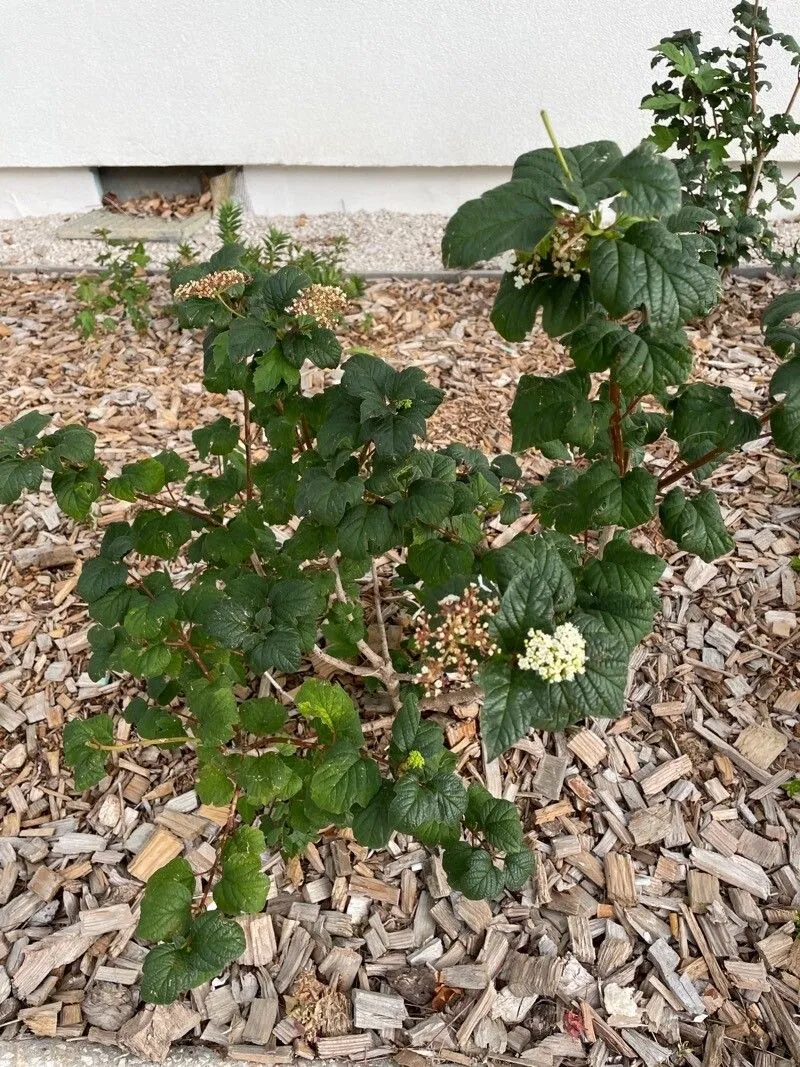
Author: Thunb.
Bibliography: J. A. Murray, Syst. veg. ed. 14:295. 1784 May-Jun (Fl. jap. 124. 1784 Aug)
Year: 1784
Status: accepted
Rank: species
Genus: Viburnum
Vegetable: False
Observations: C. & S. China to Temp. E. Asia
Linden viburnum, scientifically recognized as Viburnum dilatatum, is a robust member of the Viburnaceae family. Introduced to botanical records by Thunb., the species was meticulously described in the fourteenth edition of Systema Vegetabilium by J. A. Murray in the late 18th century.
This deciduous shrub is renowned for its adaptability and hardiness. It thrives natively across Central and Southern China, extending into temperate regions of Eastern Asia. The adaptability of Linden viburnum to diverse climatic conditions underscores its widespread distribution across such a geographically varied area.
Typically, Linden viburnum is appreciated for its aesthetic appeal throughout the seasons. During spring, it showcases clusters of small, creamy white flowers. These blossoms serve as a prelude to its attractive red drupes that emerge in late summer to fall, offering a vibrant color contrast against the lush green foliage. As autumn arrives, the leaves transition into hues of red and purple, adding to the plant’s ornamental value.
In landscapes and gardens, Linden viburnum is often utilized for its dense growth habit, making it suitable for hedgerows and privacy screens. Its ability to tolerate varying light conditions, from full sun to partial shade, alongside its moderate water requirements, makes it a favored choice among gardeners seeking low-maintenance yet visually appealing plants.
The significance of Linden viburnum extends beyond aesthetics. Its berries, while slightly bitter to human taste, serve as a vital food source for local wildlife, particularly birds, during the colder months. This ecological role enhances biodiversity, supporting various species within its native and introduced habitats.
In summary, Linden viburnum (Viburnum dilatatum) is a distinguished shrub celebrated for its seasonal beauty, versatility in gardening, and ecological contributions. Its historical documentation and wide range of adaptability continue to affirm its importance in both ornamental horticulture and natural ecosystems.
Eng: linden arrowwood, linden viburnum
En: Linden viburnum, Linden arrowwood
Zh: 荚蒾
Ja: Gamazumi
Ko: 가막살나무
© copyright of the Board of Trustees of the Royal Botanic Gardens, Kew.
© copyright of the Board of Trustees of the Royal Botanic Gardens, Kew.
© copyright of the Board of Trustees of the Royal Botanic Gardens, Kew.
Taken Jan 1, 1900 by EOL − Ori Fragman-Sapir (cc-by-nc-sa)
Taken Oct 24, 2021 by Alexandre Chaput (cc-by-sa)
Taken Oct 2, 2022 by Jake Scaffidi (cc-by-sa)
Taken Sep 16, 2022 by Ronica Brownson (cc-by-sa)
Taken Oct 15, 2020 by 志埜杜 (cc-by-sa)
Taken Apr 6, 2022 by Maarten Vanhove (cc-by-sa)
Taken Apr 6, 2022 by Maarten Vanhove (cc-by-sa)
Taken Oct 3, 2020 by Clara Stevens (cc-by-sa)
Taken Oct 22, 2022 by Jim (cc-by-sa)
Taken Jul 2, 2022 by Alessandro Discalzo (cc-by-sa)
Taken Jul 9, 2022 by Sheryl Combee (cc-by-sa)
Taken Oct 2, 2022 by Jake Scaffidi (cc-by-sa)
Taken May 31, 2022 by Lenore Roca (cc-by-sa)
Taken May 21, 2021 by Diana Gilpatrick (cc-by-sa)
Taken May 22, 2020 by Hissanova Nakamrah (cc-by-sa)
Taken May 21, 2020 by alcedo (cc-by-sa)
Taken Jun 16, 2021 by 志埜杜 (cc-by-sa)
Taken Aug 30, 2022 by Villien Philippe (cc-by-sa)
Taken Nov 2, 2021 by Lenore Roca (cc-by-sa)
Taken May 21, 2020 by alcedo (cc-by-sa)
Taken Jan 1, 1900 by EOL − Smithsonian Institution, National Museum of Natural History, Department of Botany (cc-by-nc-sa)
Taken Jan 1, 1900 by EOL − Howard, R.A. (cc-by-nc-sa)
Growth habit>: Shrub
Family: Myrtaceae Author: (F.Muell.) K.D.Hill & L.A.S.Johnson Bibliography: Telopea 6: 402 (1995) Year: 1995 Status:…
Family: Rubiaceae Author: Pierre ex A.Froehner Bibliography: Notizbl. Bot. Gart. Berlin-Dahlem 1: 237 (1897) Year:…
Family: Sapindaceae Author: Koidz. Bibliography: J. Coll. Sci. Imp. Univ. Tokyo 32(1): 38 (1911) Year:…
Family: Asteraceae Author: A.Gray Bibliography: Pacif. Railr. Rep.: 107 (1857) Year: 1857 Status: accepted Rank:…
Family: Fabaceae Author: Medik. Bibliography: Vorles. Churpfälz. Phys.-Ökon. Ges. 2: 398 (1787) Year: 1787 Status:…
Family: Aspleniaceae Author: (Cav.) Alston Bibliography: Bull. Misc. Inform. Kew 1932: 309 (1932) Year: 1932…